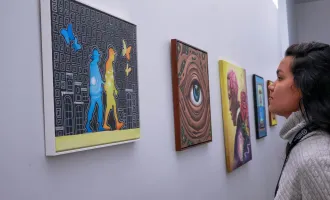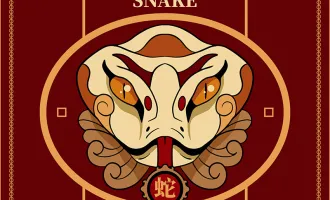Reflections in the Psych Mirror
In my native language Shona, a popular aphorism advises “seka urema wafa.” Roughly translated, it means “laugh at a cripple when you are dead.” In Shona, idioms like this are called tsumo. As with this example, most tsumo are as demonstrative as they are jarring, being rich in metaphorical meaning yet terse in expression. Tsumo collectively represent a form of cultural wisdom in Zimbabwe that older generations use to instill values and ideals in the minds of the young. In a sense, they are not so different from many American idioms. This particular tsumo calls to mind several American-isms most of you probably know, for example: “what goes around comes around”, “life is like a box of chocolates”, and “you reap what you sow.”
Therefore, late last year when I learned that I would be spending my clinical interlude in a psychiatry ward, I was both curious and fearful of exploring how my upbringing might color my new relationship to mental health as medical student. In Zimbabwe, mental illness is rarely discussed in public and is dealt with in a more familial way that might seem unstructured to most Americans. Zimbabweans do not distinguish mental illness. Different dialects aside, in Shona there are mostly two words for mental illness: “kupenga” (madness) and “urombe” (an all-encompassing word denoting irresponsible/reckless/abusive/deprecating behavior).
Contrasted with Western modalities, where mental illness has many labels such as anxiety disorder, mood disorder, psychotic disorder, eating disorder, impulsive disorder, and so forth, I can see why my tradition shies away from such practices: one cannot avoid “laughing at the cripples” if one goes about meticulously labeling everything. Kupenga/Urombe may take one of two forms: congenital malformation of the mental faculties or degeneration from “normal” to literally “losing it.” The latter is seen, for example, in men who beat up their wives, or drink away the entire pay check, or have sexual relations with livestock.
Despite the all-encompassing nature of either kupenga or urombe, neither term was ever intended to represent depression or anxiety, two of the most common conditions in Western culture. Perhaps ignorance is bliss, but I do not believe that depression and anxiety are common occurrences in villages where one is hardly ever alone. When the sweat and toil of your brethren and of your own making determines what food is on the table, there is no time or space to be very lonely, or to have eating disorders. Unfortunately, Western culture and urbanization is seeping through everywhere, leaving Zimbabweans no choice but to use the same jargon to express newfound mental illness.
As a medical student conducting patient interviews, I have come to appreciate asking what a patient thinks is behind his or her illness. This so-called patient’s explanatory model of sickness is rich with all sorts of beliefs. Zimbabweans’ explanatory model is either witchcraft or spirit possession. It is the spirit of an aggrieved dead person that causes mental illness. Perhaps it was a murder committed by a close relative or a jealous relative who has cast a spell.
The cures? Traditional healers and family courts. The work of these healers and the strategies used by great uncles and aunts in family arbitration are beyond the scope of this piece. There are successes and failures. If brewing beer and dancing the evil spirits away cures mental illness, then I approve. Or perhaps if the answer is that family should fast and have an all-night prayer, then I’m all in. Sometimes the charm is drinking a tea concoction or two and spending an afternoon covered by a blanket and burning some incense or leaves.
In reminiscing over mental illness in Zimbabwe, I realize that my tradition ensures that mental illness is self-evident. The US society, on the other hand, has a harder time detecting mental illness. We watch excessive media coverage of violent crimes committed by people, though often suffering from mental illness, are known only to others as “such a good kid” or “a loving neighbor.”
For me the opportunity to spend time with the “gatekeepers” tasked with the responsibility of keeping the public safe from “crazy” people – was very intriguing. What I saw at San Francisco General Hospital (SFGH) shattered my expectations. I still have no clue how as a society we can identify people with serious mental illness before they harm themselves or others. However, it was evident that once one steps into the focus of the SFGH Psychiatry team, everyone has reason to cheer. The Psychiatry team is devoted to the gargantuan cause of keeping both the public safe and the patients safe on the road to mental health.
I saw men and women who toil insanely for sanity, for respect, for pleasure, for a smile, for sensibility, for self-worth, for self-preservation. What I saw were patients so close and yet so far, so beautiful and yet so maimed, so right and yet so wrong. Frustration and relief were intermingled, hope and despair entangled, presence and absence intertwined. The patient charts and files are but a snapshot of who they are. Their hopes, dreams, struggles and triumphs can sometimes be gleaned from the expressions on their faces, as are those of their caregivers. Diagnoses are made and remade, medications administered, trust developed, sanity reinforced and relationships forged.
What I saw in the Psychiatry units at SFGH is a society of misfits in a delicate dance; a wrong step here, and a two-step there. Tip tap, tip tap tap. It can be beautiful, it can be ugly. Often victories are short-lived, and the dance begins anew. Yet they persevere, they keep at it, two sides of the same coin always trying to meet in the middle. It’s a love-hate relationship, sometimes one-sided, yet it’s clear that they are both working on it. As impressive as all this was, there was no mistaking the fact that money, politics, and the law throw wrinkles into the dance and yet as a society we expect nothing but positive outcomes.
As a professional walking the cultural divide, I know that my future patients could very well benefit from either traditional psychotherapy and healing practices or from evidence-based, ethical Western biomedical treatments, or both. The new mantra in medical school teaches the biopsychosocial model of disease—the idea that patients are biological, psychological and social people. All future doctors will become experts at the first part, but the latter two are something else altogether. We can talk about cultural competence or immersion into the social fabric all day, yet the truth is that it’s easier said than done.
Among the many experiences during my clinical interlude, perhaps one of the most thought provoking was the dedication of mental care facilities for HIV/AIDS patients. Being from a country where many HIV inflicted patients do not share their diagnosis as much as they might do with other types of news, I realize that there is plenty of anxiety and depression that can be associated with such secretive, isolationist behavior. Moreover, the stigma attached to the diagnosis simply predisposes people to depression and serious mental anguish. As such, I feel championed and empowered to emulate the model I saw at SFGH. How that will be implemented in a setting like Zimbabwe is a challenge I will face for the rest of my career.
All in all, my life and career span vastly different belief systems; I can scarcely grasp my own culture, yet I am expected to understand and embrace so much “otherness”. In spite of the ever-changing world around me, I need to hold on to my identity while also assimilating qualities that affirm my Hippocratic oath. I must swim with the current, yet be able to flap my own fins every now and then. What about you? Dare I say “seka urema wafa?”


